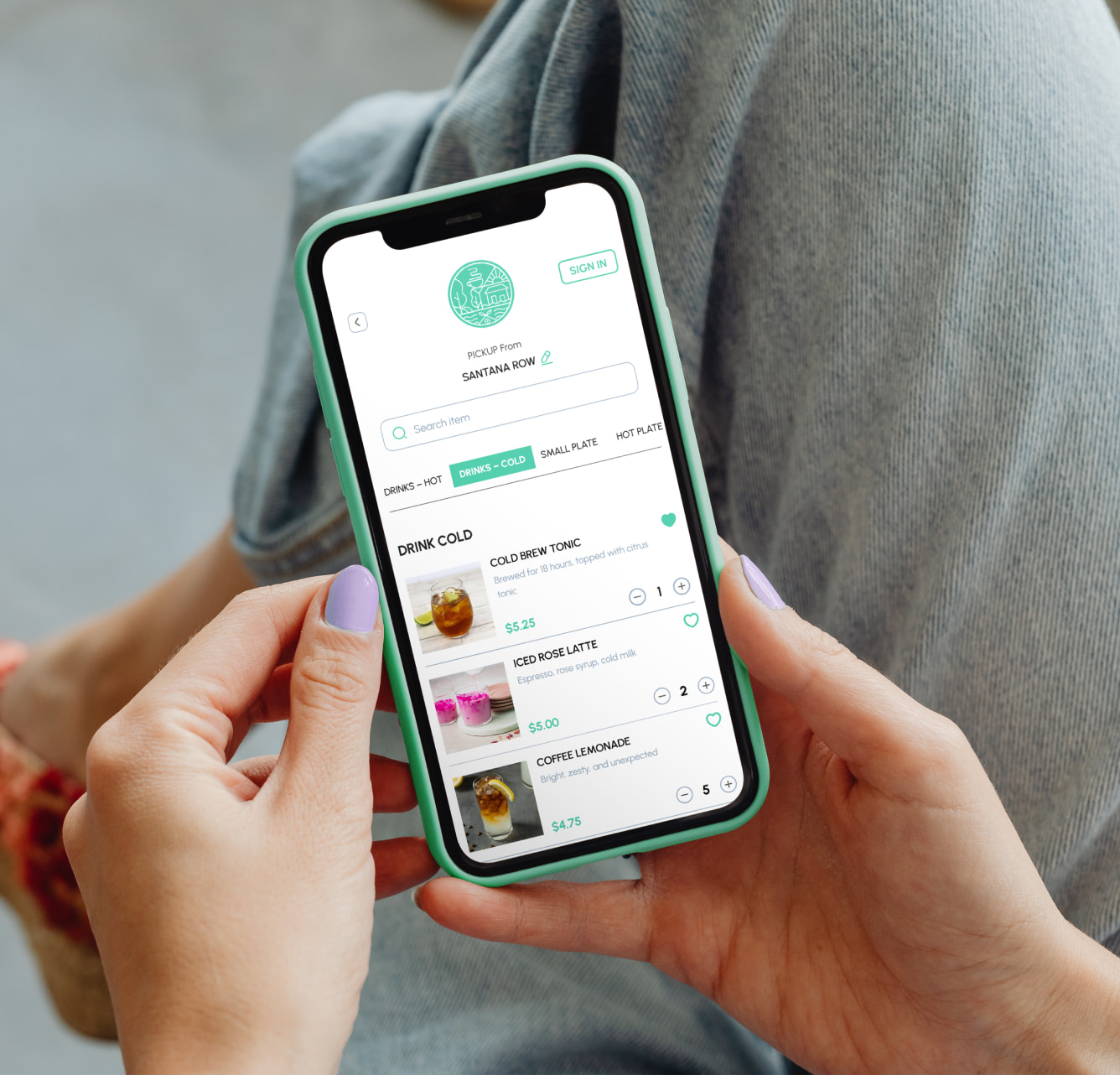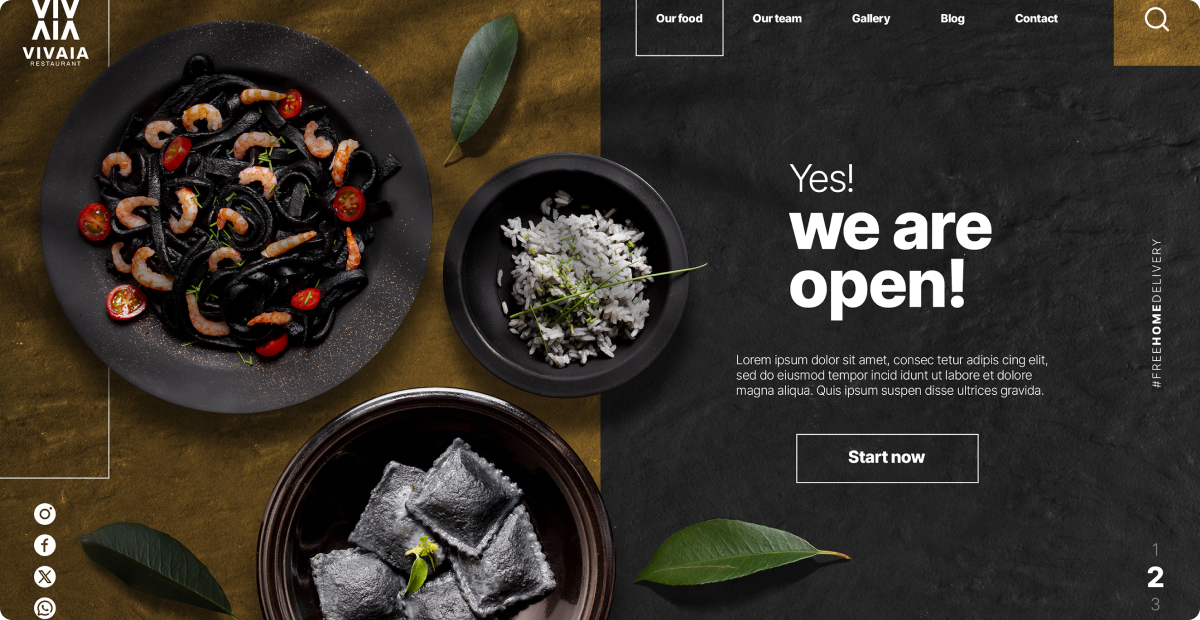Key Takeaways
1. Crafting menu descriptions involves two critical aspects: Words that stimulate appetite and vivid imagery.
2. A good restaurant menu design involves layout, typography, coloring, SEO optimization, and a call to action that encourages customers to buy the dish.
3. Writing good restaurant menu descriptions requires incorporating local SEO tips, updating menus regularly, implementing high-quality visuals, and adhering to proper word limits.
Did you know that 85% of diners look up menus online before deciding on a new restaurant? Menus don't just list your offerings; they tell a story and spark cravings. The right words evoke flavors, create anticipation, and influence ordering decisions. Your menu descriptions play a massive role in ensuring prospective diners stumble upon your restaurant and choose you. It directly translates to higher sales.
Crafting good menu descriptions isn't just about appealing to customers; it's also about boosting your online visibility, creating brand awareness and letting customers know exactly what to expect. In this blog post, let's explore actionable tips for writing killer menu descriptions!
Why Do Menu Descriptions Matter?
When crafting menu descriptions, there are two essential things to keep in mind: appealing images and words that create an appetite. Using descriptive language makes the dishes look and sound more interesting.
Words like crispy, sizzling, or velvety emphasize texture and flavour. A more comprehensive example, like "tender, slow-cooked lamb in a rich rosemary-infused sauce," informs the customer about the dish and stimulates an intense craving.
But there's more to this than appeal.
Let's look at a few other reasons why attractive menu descriptions matter:
- Enhances clarity and offers personalization: Effective menu descriptions help customers understand the ingredients, preparation style, and flavor palette, creating a sense of anticipation. It helps customers choose according to their personal preferences. You can classify items based on allergens, dietary restrictions, lifestyle choices making all customers feel included ed.
- Provides emotional appeal: Good menu descriptions can tell a story about the dish's origin, chef's inspiration, or cultural significance, adding more depth to the dining experience
- Differentiates from competitors: Unique and descriptive menu items that are memorable can set the restaurant apart from the competition and make the dishes stand out, leaving a lasting impression on customers.
A well-written menu description stands out even more when paired with thoughtful design. By using fonts, colors, and layout strategically, you can guide attention and enhance readability. Here’s how to bring it all together.
Key Elements of a Compelling Restaurant Menu Design
A well-designed menu does more than list dishes—it subtly guides customer choices and boosts sales.
With that in mind, here are the key elements to consider when crafting the perfect restaurant menu:
- Layout & Organization: Menu items should be arranged logically, guiding the diner's eye from appetizers to desserts. Implement clear sections and use borders or boxes to separate items for easy navigation.
- Typography & Readability: Choose easily readable fonts that reflect your brand's personality. Some easy-to-read font styles include Helvetica, Open Sans, Verdana, and Quicksand. Also, ensure adequate spacing between menu items to avoid clutter.
- Color & Branding: Use your brand colors to reflect your cuisine and elevate the dining experience. Running a QSR? Go for bold colors like red or yellow to spark hunger and energy. Own a cozy café? Warm, earthy tones help create a relaxed, inviting atmosphere.
- High-Quality Imagery: Visually appealing photos or illustrations of dishes should be incorporated into menus. Ensure images are shot in good lighting and high resolution to showcase the quality and freshness of your dishes.
- Descriptive & SEO-Optimized Text: Write descriptive yet concise menu descriptions with relevant keywords to highlight key ingredients and flavors. Using terms like vegetarian options, gluten-free dishes, local ingredients, etc., can improve your SEO and attract more visitors.
- Pricing Strategy & Placement: Place pricing details strategically in a way that doesn't overlap with descriptions. They can be placed either at the end of the descriptions or aligned to the right, making them easier to find.
- Call to Action: Use persuasive language that encourages customers to take action. You can use terms like "Order Now" or "Pair with a Drink." These texts can be highlighted in bold text, colored boxes, or icons to draw their attention
- Digital & Print Adaptability: Design menus that are easily adaptable for both digital and print formats.
- Seasonal & Local Emphasis: Rotate menu items seasonally to keep your offerings fresh. Highlight the dishes that are unique to your region, culture or cuisine to appeal to customers
- Highlight Signature Dishes: Showcase signature dishes or chef specials by highlighting them using design elements like borders, icons, or special fonts. Menu psychology techniques like placing such dishes at the center or top-right of the menu for higher visibility can attract and entice customers
- Menu display feature: Use QR codes and interactive menus to help increase customer engagement and order accuracy. It also allows for quick menu updates and optimizes promotions in real time.
Effective online ordering systems such as RestoLabs can help you incorporate key design elements into your restaurant menu, allowing you to design, modify, and optimize them effortlessly. It also allows you to seamlessly perform these actions within an easy-to-configure dashboard, easing the entire process and driving more orders.
Now that you know how to create bang-on menu designs, here are the best-tested tips to make your menu descriptions worth reading.
Tips for Writing the Best Menu Descriptions
To create stand-out restaurant menu descriptions, you must understand how to tell a story, captivate customers, and nudge them to order.
Here are the best menu description writing tips to follow:
1. Use Sensory Language
Make your descriptions mouthwatering. Appeal to the senses of the hungry customer. This is where you make every dish a quick story.
- Evoke their taste senses with words like umami-rich, honey-glazed, citrus-infused, buttery, tart, tangy, smoky, etc.
- Give them a texture feel with words like velvety, juicy, melt-in-your-mouth, fall–off-bone, crackling golden brown, etc.
- Play with the aromas using warm & comforting, cinnamon-spiced, freshly brewed, roasted to perfection, garlicky, herbaceous, etc.
Example: Instead of saying “chicken burger” on your menu, try “Juicy grilled chicken with smoky chipotle mayo on a freshly toasted brioche bun”.
2. Highlight Key Ingredients and Origins
Customers love knowing about the uniqueness of a menu item. When you tell them that the ingredients are locally sourced, high-quality, farm fresh, chef’s hometown special, or hand-rolled, it enhances the emotional appeal of the dish.
- To highlight ingredients - “Creamy San Marzano tomato bisque with a hint of basil, served with crispy sourdough croutons."
- To bring out the origin - “Grass-fed Australian Wagyu steak, flamed to perfection with a side of heirloom sourdough with truffle-infused mashed potatoes.”
3. Match Your Menu Descriptions to Your Brand Personality
Your menu must reflect your restaurant’s vibe. Whether you’re a high-functioning QSR, a poised Japanese sushi spot, a chill cafe, or a relaxed fine dine, your menu must say just that.
- Casual & Fun: “A burger so juicy, you might need extra napkins.”
- Upscale & Elegant: “Tender filet mignon, seared to perfection, with a red wine demi-glace.”
- Rustic & Comforting: “Just like Nonna made—hand-rolled gnocchi in a rich, slow-cooked tomato ragu.”
4. High-Quality Images for Digital Menus
With online ordering, your descriptions need to work even harder since customers can’t see or smell the food.
- Use high-resolution, well-lit photos that highlight texture, color, and portion size to instantly grab attention
- Add emojis or icons for dietary tags (🌱 Vegan, 🔥 Spicy, ⭐ Chef’s Special)
- Make sure descriptions are optimized for mobile screens
- Maintain visual consistency in lighting, plating, and background to strengthen your brand’s identity and professionalism
5. Tell a Story While Using Power Words
Your menu is more than just a list of food items. Make it an extension of your brand, and bring out a value element.
- Use power words that spark curiosity or nostalgia: “Born in the bustling spice markets of Marrakech, this bold and fiery lamb tagine simmers in a seductive blend of cinnamon, cumin, and chili.”
- Describe an experience: “Indulge in this luxuriously creamy risotto, slow-stirred to perfection with wild porcini mushrooms and a drizzle of truffle oil.”
6. Keep it Concise (But Impactful)
Choose your words well. You need to say everything, yet not bore the customer. High-impact, sensory-rich words with a clear structure always work.
- “Wild mushroom risotto with white truffle oil and aged Parmesan”
- “Charred chili-lime corn with smoky paprika butter” (No fluff, still vivid)
7. Mention Dietary Benefits
Try to position dietary restrictions as a “feature” and not a “label”. This broadens your appeal while keeping customers aware of their choices and ingredients.
- “Light and satisfying quinoa tabbouleh – protein-packed and gluten-free, perfect for clean eating” - self-explanatory
- “Coconut chia pudding with fresh berries and agave syrup – a naturally vegan, gluten-free treat.” - has berries and is vegan
8. Price Positioning Trick
Smart menu descriptions can be your biggest sales aid. Here’s how:
- Use descriptive language to justify higher prices:
“Grass-fed New Zealand lamb, slow-braised for 8 hours in a bold red wine reduction” – $34
- Tuck Prices Into the Description (Avoid Price Columns):
Embed the price at the end of the description in the same font. It prevents customers from “price scanning” and encourages value-based choices.
- Anchor High-Margin Items Near Premium Descriptions:
Position your most profitable dish next to the most expensive or luxurious item. This makes it feel like a smart, mid-range choice.
Tomahawk Ribeye – $68
Herb-crusted salmon with citrus beurre blanc – $29 (looks like a steal in comparison)
9. Evoke Scarcity and Exclusivity
Use time-limited language like season specials, today’s catch, rare, aged, private batch, or chef’s reserve to imply exclusivity and create a unique appeal to your restaurant.
- “Sourced from a single-origin family farm in Oaxaca—our mole negro is ground fresh weekly and served only in limited portions” - tells the customer it is rare.
- “Duck confit prepared with this morning’s farm harvest” -signals it’s a special, seasonal dish—encouraging diners to act fast.
10. Avoid Generic and Over-Used Words
Replace generic words with sensory ones. Say indulgent instead of tasty, hand-picked instead of special, succulent instead of mouth-watering. This way, your customers are excited and eager for the dish to arrive.
11. Strategically Structure your Menu
This goes a long way. It determines what description your customers read. To do that effectively, here are a few simple tips:
- Explain the flow of the meal through your menu: starters – mains – sides – desserts – drinks
- Place high-profit items in the golden triangle (top right, centre, top left corners)
- Use hierarchy in descriptions:
Dish Name (bold) – short, punchy description – then highlight key ingredients, origin, or preparation
Example: Wild Mushroom Risotto
Creamy Arborio rice, white truffle oil, aged Parmesan – finished with thyme and butter
12. Menu Descriptions That Double as Marketing
A well-crafted menu description can double as marketing copy. For example:
"Spicy buffalo chicken wings - Choose from 6 pieces ($8.99) or 12 pieces ($14.99), served with ketchup and cheese dip."
You are highly likely to get customer attention, converting it into sales. This can also be applied to social media or other channels. You can also use catch combo deal descriptions to gain traction.
The tips are tailored to suit the needs of your restaurant. When used correctly, they can attract and retain customers. If you’re wondering how all of this can lead to direct sales, read further to get an idea.
Driving Direct Revenue with Effective Menu Descriptions
Increasing your restaurant's online visibility is essential to building an organic customer base. You can use relevant keywords in your descriptions like gluten-free pasta, vegan burger, or locally sourced ingredients to boost SEO indexing and drive web traffic.
Location-based keywords such as "best tacos in Austin" or "Brooklyn-style Margherita Pizza" can bring in local traffic.
Search engines generally prioritize active websites. Updating online menu descriptions with seasonal items, special promotions, and trending dishes can also boost your visibility, helping you stay on trend.
Boost Your Bottom Line with Irresistible Menu Descriptions
A great menu description does more than list ingredients—it tells a story, sparks cravings, and nudges customers to order. With the right words, even simple dishes become must-tries. In today’s crowded restaurant space, smart menu description is a powerful way to stand out and drive sales. But writing great descriptions is only the first step.
With RestoLabs, restaurants can seamlessly showcase their menu online, update descriptions in real time, and enhance customer engagement with features like customizable menus, performance tracking, and easy online ordering. As the industry evolves, the potential to integrate smarter menu strategies, such as upselling recommendations and exclusive online offerings, can further help restaurants maximize revenue.
The right menu, combined with the right technology, can transform how restaurants connect with their customers and grow their business. So, why wait? Book a free demo with RestoLabs today and experience the benefits of smart menu management that can turn tasty text into tastier profits!
Frequently Asked Questions


.gif)

.png)


.png)



